.ashx?h=351&w=872.667)
Elephants, the largest living land animals on Earth, are considered to be a keystone species in the forest and savannah landscape. There are three species of elephants found in Africa and Asia:
- Africa: African bush elephant (Loxodonta africana) & African forest elephant (Loxodonta cyclotis) - both male and female of these two species are capable of growing tusks
- Asia: Asian elephant (Elephas maximus) - generally smaller than African counterparts and only some males have tusks.
Based on the IUCN’s Red List of Threatened Species latest assessment in 2008, Asian Elephants are listed as endangered while African Elephants are listed as vulnerable.
In recent years, elephant populations have been threatened by the illegal wildlife trade. Elephants are poached mainly for their ivory tusks, teeth modified from their upper incisors and it is most highly valued among all ivory which can be found in the tusks and teeth of various mammals. These ivory tusks, which can grow up to 3.5 metres in length, are highly sought after by collectors and fetch extremely high prices on the market.
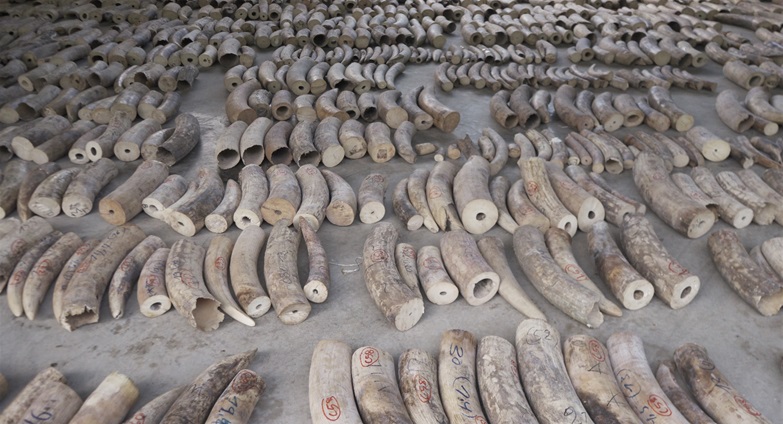
The ivory trade is a multi-billion dollar industry that results in the deaths of an average of 17,000 elephants annually.
The decline in elephant populations worldwide is also further exacerbated by habitat loss and fragmentation due to commercial logging and conversion of land for agriculture, settlements and urban development. These activities also provide poachers with open access to remote areas of forests, increasing the vulnerability of the elephants. Hence, efforts from the Centre for Wildlife Forensics and other wildlife organisations are crucial to ensure the survival of these elephants.
Elephant ivory trade regulations
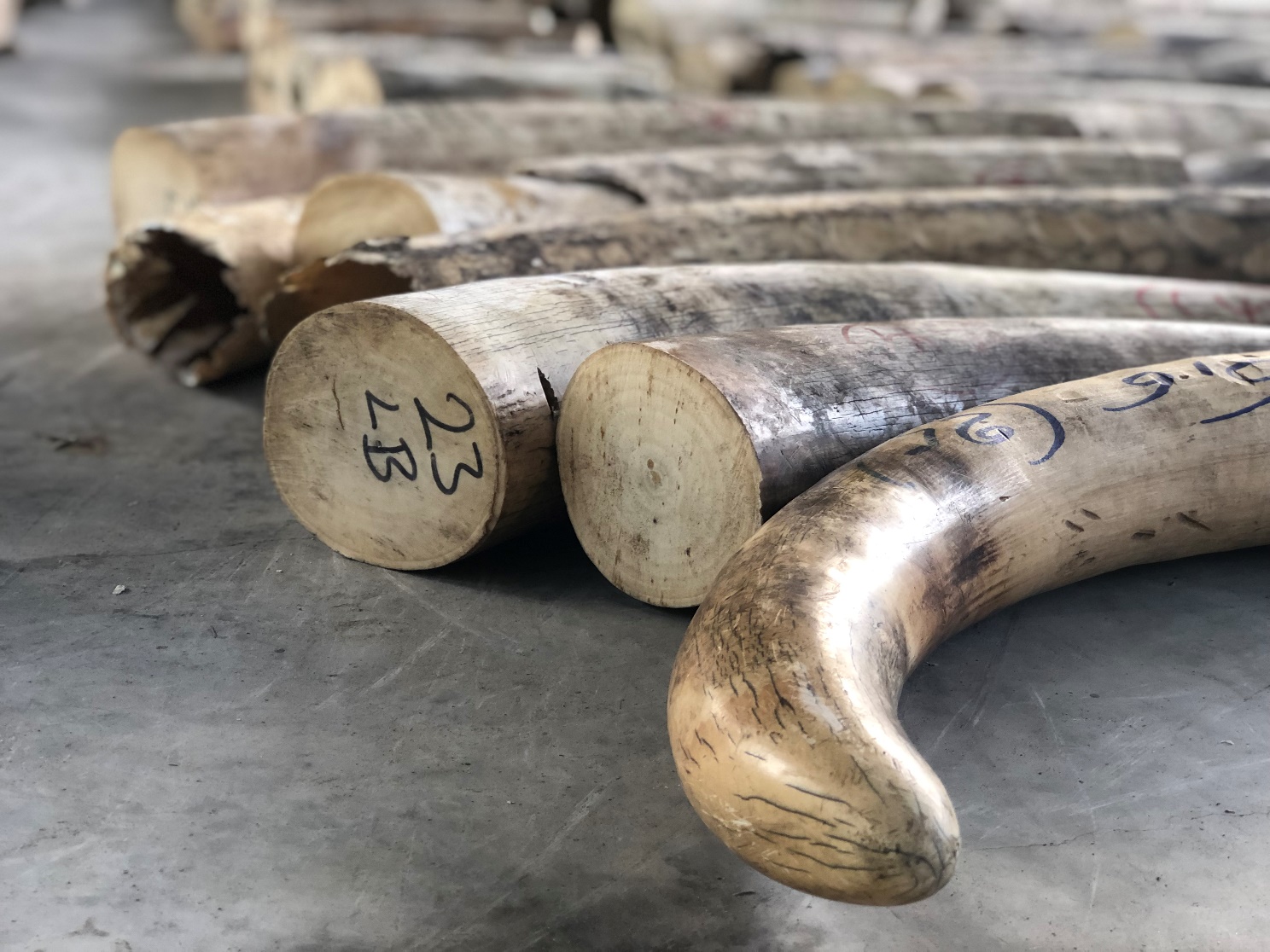
International trade of live elephants and their products is regulated under the Convention on International Trade in Endangered Species of Wild Fauna and Flora (CITES).
- African elephants in Botswana, Namibia, South Africa and Zimbabwe are listed in CITES Appendix II where trade is controlled to prevent overexploitation of the species
- African elephants in all other states and all Asian elephants are listed in CITES Appendix I where trade is only permitted in exceptional circumstances as the species is considered to be threatened with extinction.
Singapore has been a Party to CITES since November 1986. This restricts the international trade of elephants and their products listed in CITES Appendix I. The international trade of CITES Appendix II elephant parts and products requires a valid CITES permit.
Within Singapore, a ban on the domestic trade in elephant ivory will come into force from 1 September 2021, after a two-year grace period. The ban will mean that the sale and public display for the purpose of sale of elephant ivory and ivory products in Singapore would be prohibited. This nationwide ban is the most stringent domestic ban internationally and highlights Singapore’s strong resolve in the fight against illegal trade in CITES-listed species.
Identification of Elephant Ivory
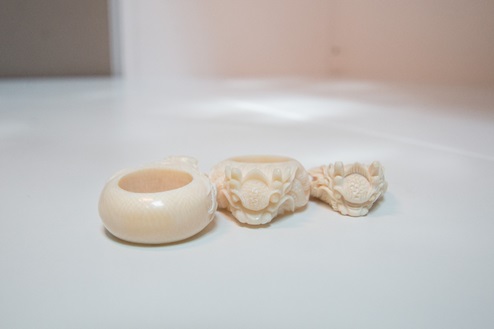
Ivory tusks are either sold as display pieces or made into luxury goods such as artwork, chopsticks and necklaces. The high value placed on elephant ivory has resulted in the rise of fakes or ivory substitutes on the market. It is thus important to be able to identify real ivory from fake or substitutes.
Elephant ivory can be identified using a wide range of methods such as visual examination under low magnification, examination under longwave ultraviolet radiation, Fourier transform infrared spectroscopy, stable isotope analysis and DNA analysis.
Visual examination under low magnification is one of the most useful methods to identify elephant ivory. Real elephant ivory products can be easily identified through uniquely characteristic Schreger lines in a polished cross-section of an elephant ivory dentine. Schreger lines are also commonly referred to as cross-hatchings, engine turnings, or stacked chevrons.
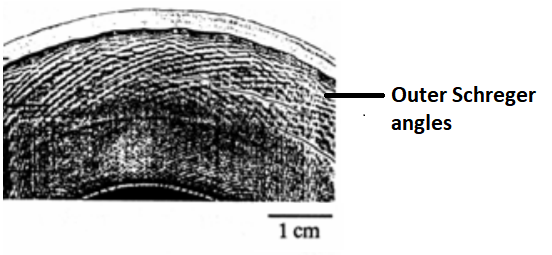
Image source: Identification Guide for Ivory and Ivory Substitutes – page 10 [link]
In recent years, other identification techniques such as DNA analysis are taking precedence due to its ability to provide more in-depth information about the elephants from which the ivory tusks are obtained. This allows for species level identification and even the tracing of ivory shipments, linking them to the traffickers.
International collaborations
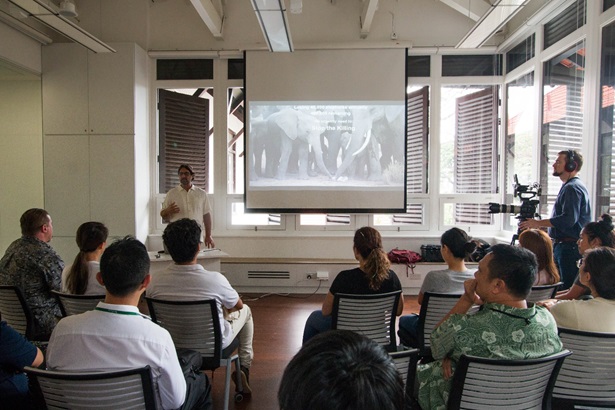
NParks is also involved in efforts to trace the origins of confiscated ivory tusks. In March 2018, Singapore seized a Vietnam-bound shipment of ivory tusks worth about US$2.5 million (S$3.28 million). Since then, NParks has been collaborating with conservation biologist and University of Washington Research Professor, Dr Samuel K Wasser to trace the origins of these ivory tusks. More than 250 ivory samples were collected for forensic analysis by Dr Wasser. Such information enables conservation law enforcers in identifying source countries to take action against poachers.
How can you help?
As the ban on the domestic trade in elephant ivory will come into effect from 1 September 2021, it is also important to be aware of the dos and don’ts regarding ivory products.
If you are in possession of ivory stock, you may choose to keep, dispose or donate them to a museum for public education purposes. Should you require assistance with the disposal of your ivory stock, you can contact NParks at cites@nparks.gov.sg. If you wish to donate your ivory stock to a museum, you may contact the museum directly. For more information on the domestic ivory ban, you may refer to the FAQ here.
If you spot any occurrences of illegal wildlife trade, and ownership of endangered or wild species and its parts, you may contact NParks using the online feedback form or call 1800-476-1600. All information shared with NParks will be kept confidential.